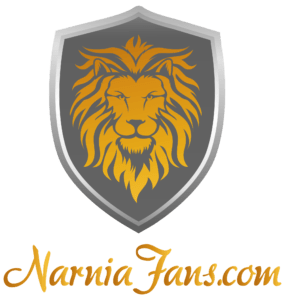IGN FilmForce spent some time on the sets of Narnia towards the end of 2004. Besides touring the sets, meeting members of the cast and crew and even hanging with some wolves, FilmForce was taken on a very extensive tour of the WETA studios led by Taylor himself.
Q. Had you read the C.S. Lewis books before this project came to you?
Richard Taylor: I actually had a more intimate knowledge and history with C.S. Lewis’ work than with Tolkien’s. Being a dyslexic chap as a young guy, my reading skills weren’t particularly hot. I wasn’t thrilled by The Hobbit, struggled with Lord of the Rings, and found C.S. Lewis’ writings – all of his books – a wealth of fantasy worlds I could celebrate myself. I read The Magician’s Nephew first – most people enter the world of Narnia through the Lion, Witch, and the Wardrobe. The Horse and His Boy is my favorite. To me, that book has an intimacy that none of the others have, while still painting this vast landscape of worlds and turmoil. It was [necessary] to really understand the mythology through all the books to bring reality to the book we were making. Voyage of the Dawn Treader explores the world of Narnia more thoroughly than any of the others, and that’s where we were able to pick up so many of our notations on cultural references. It was a delight, when we entered Narnia, to discover that much of the team had an incredible amount of knowledge in the world of Narnia, just due to the fact that it was so heavily read in this country.
Q. How many different creatures did you guys create?
Richard Taylor: When we started on the film it was Andrew’s intention to bring them all to the screen. And we touched on or designed sixty-four separate creature lines and derivates from those lines. As the movie has progressed, and as the visual effects department has come on board, budgetary issues have come on board. As Andrew has tried to put his arms around what is Narnia, things have dropped out – there were stalks and pelican in there. It will be interesting to see, if the visual effects department gets hold of the film in post-production, how many of those creatures actually make it back into the story. In the visual world of filmmaking, the last thing you want to do is jar the audience – especially a young audience – out of the story because they’re analyzing the disparities between all of these massive creatures. I keep coming back to the man faced bull because it’s part of Grecian mythology, and its such a strong image, you try to design it as a piece of film work – suddenly you get this truncated animal and unless you’ve got some sort of a cultural world to support its just this bull with its head chopped off.
It’s amazing how odd some of these concepts are once you start putting them into a visual reference. Even the centaur, we’ve done centaurs to death over the years on Hercules and Zena, when you start to analyze the physical structure of a centaur, as we’ve had to do on this one… Where does the spine go? Where do the hips go? Are they human hips, or the hips of a horse? It is a complex design issue. And the centaurs we probably worked on for nine months, trying to find the right musculature and seating. So in answer to your original question I think you’ll find a thinning out of the original creatures. I’m really pleased by the choices he made- surprised at, but pleased. The werewolf – to find a werewolf in the land of Narnia is an odd one. It feels like it’s part of modern filmic mythology, but of course it’s a creature that’s been around modern mythology for a long time.
Q. And then there are good guys and bad guys, but they’re the same species…
Richard Taylor: That made for the most wonderful interplay in our design phase. In Lord of the Rings, there are goodies and baddies, but we always denoted the baddies as the hard cruel aggressive forces. They had blackened armor, they had no teeth, as Tolkein described them… In Narnia, just because they’re baddies doesn’t mean they have crap armor. Our most lethal baddies are the menators, and those, we’ve made the most opulent and exotic armor. They’ve used repuso- they’ve used an Italian Renaissance technique of taking sheet steel and with the use of chisels and bars, beating the steel from the back to create these voluptuous rich sculptural shapes that you can see in ceremonial Italian armor. They’re so arrogant, so assured in their confidence and strength, there’s almost a pomposity in their military force. They’ve become ceremonial in their presentation; they’re chest pieces are emblazoned with cultural shapes. As opposed to the goodies, fawns, who don’t have huge amount of military might, have to be nimble and light and sprightly on their feet – [they] use their skill and talent the way a Japanese ninja might.
For the rest, visit IGN FilmForce at the Source Link



